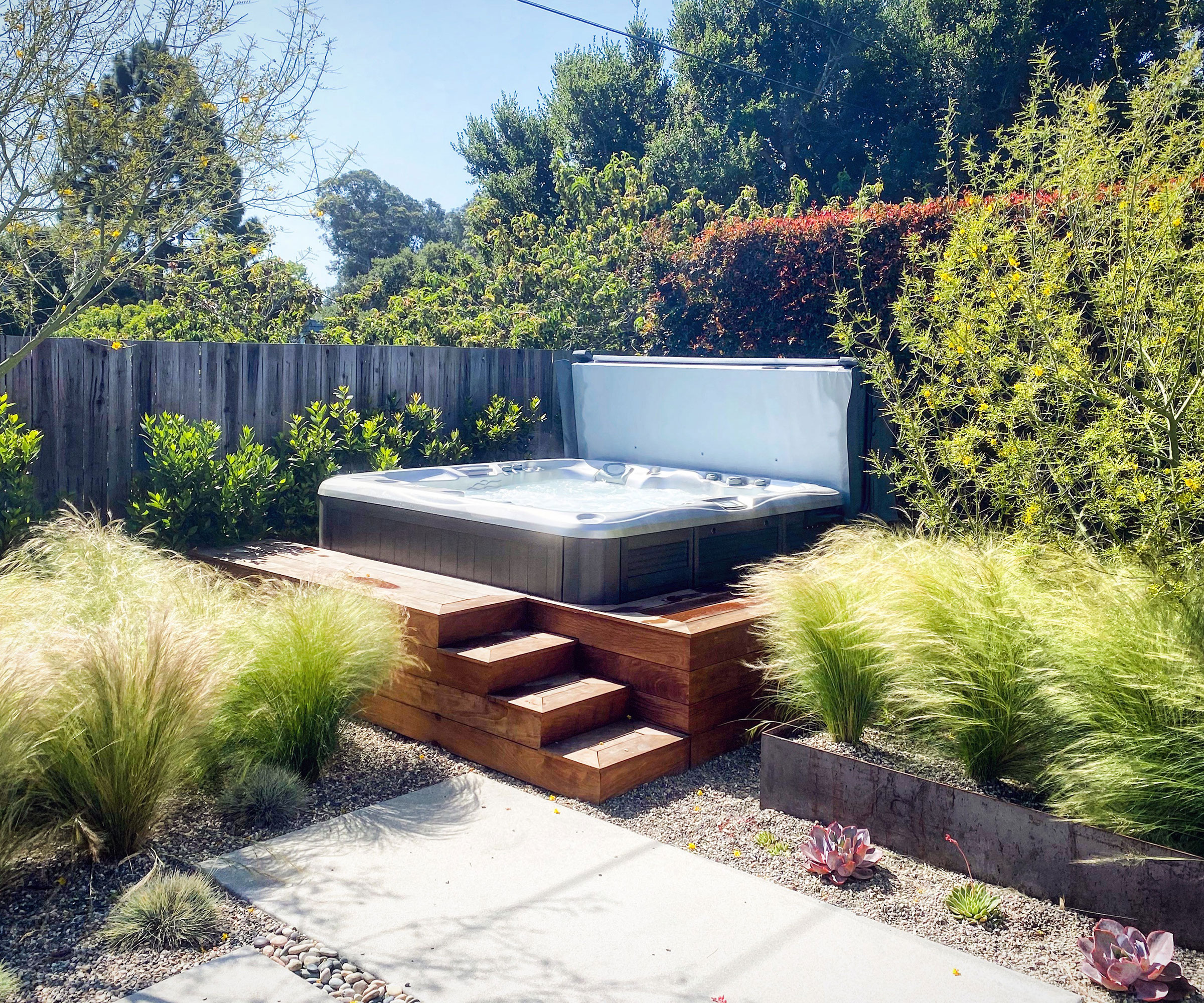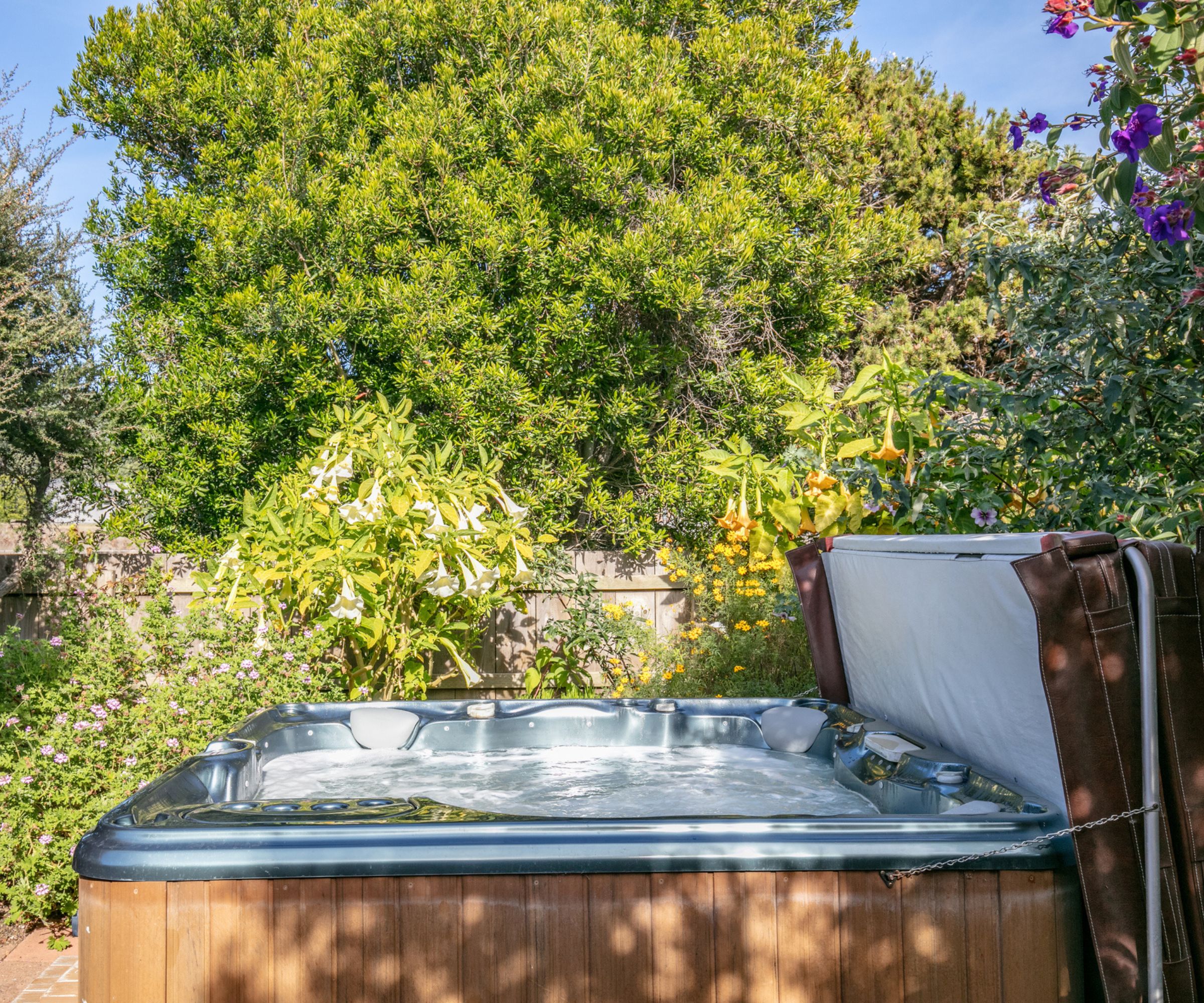Plug-and-play vs inflatable hot tubs – which is best?
Learning the difference between plug-and-play vs inflatable hot tubs could save you thousands


If you're in the market for a hot tub but can't stretch to the tens of thousands of dollars you need for a premium inground tub, you face a choice between plug-and-play vs inflatable hot tubs.
Inflatable tubs are hundreds of dollars cheaper but seem a little flimsy. Hardshell plug-and-play hot tubs are packed with features but feel pretty expensive.
I spoke to a pool expert about the best hot tubs for a variety of different homes, budgets, and styles to work out the pros and cons of plug-and-play vs inflatable hot tubs.

What's the difference between a plug-and-play and an inflatable hot tub?
The difference between the two types of hot tubs is pretty straightforward. An inflatable hot tub is, predictably, a hot tub that you inflate. It's just like a kiddie pool, but it has a heater and pump attached so that it works exactly like a full-size hot tub.
A plug-and-play hot tub is so-called because it plugs into an outdoor outlet. You may also see them referred to a hardshell hot tubs. Unlike inground hot tubs, which are dug into the ground and cost thousands of dollars to install, a plug-and-play hot tub sits on top of a patio or deck. All you need to do is fill it with water, plug it into an outlet and it's ready to be used as a hot tub.
What are the benefits of a plug-and-play?

The great thing about plug-and-plays is that they have many of the same features as an inground hot tub. They usually fit between 4-7 people, have several jets for massage, and often have dedicated massage chairs.
Many plug-and-play hot tubs have premium features like interior and exterior lighting, water fountains, cup holders, and even Bluetooth speakers for music or watching movies. These are all features you cannot find in inflatable hot tubs.
Design expertise in your inbox – from inspiring decorating ideas and beautiful celebrity homes to practical gardening advice and shopping round-ups.
Plug-and-plays are much sturdier than inflatable hot tubs and there's no need to inflate anything when you want to use them.
Pool expert Rafi Friedman told me that 'Plug-and-play hot tubs are a quality investment that can last for years. If you're going to use a hot tub enough to make it worth the money, you'll want to invest in a plug-and-play option.'

Rafi Friedman is the president of Coastal Luxury Outdoors, a pool building, construction, and cleaning company based in Florida. Coastal Luxury Outdoors provides a five-star service to over 1,000 clients, building more than 100 pools annually.

This 20-jet hot tub is made of durable, crack-resistant plastic that's also recyclable. Made in the USA, it seats four in dedicated 'captain's seats', so will work well for a small family.

This is a great option for big gatherings, a huge hot tub with 65 jets and a seven person capacity. It has hundreds of five-star reviews from other users, built-in LEDs, and a dedicated turbo-blaster back massager.

Couples will love this two-person hot tub. It has 15 jets, comfortable neck pillows, and color-changing LEDs. It also includes a UV-rated spa cover and steps.
What are the drawbacks of a plug-and-play?

The most obvious drawback of a plug-and-play hot tub is that they're expensive. Plug-and-play hot tubs usually start at around $2000 for a basic model and can rise as high as $10,000. That's before you get to all the other necessities like chlorine and pH testing kits.
Though they don't need all the installation of an inground hot tub, plug-and-plays are still pretty permanent structures, and they can be difficult to move around or sell on if you change your mind.
Because they run off outlets, they draw 110V rather than 240V, so they take a lot longer to heat up than larger hot tubs, and on some models, you can't run the water heater and the jets at the same time.
What are the benefits of an inflatable hot tub?

Inflatable hot tubs are usually thousands of dollars cheaper than hard shell plug-and-play hot tubs, so they're a much better option if you're on a budget. They're easier to set up, they take up much less room, and they can also be packed up for storage if you want a break from using them. They're easy to set up and use and there's very little to master.
Because of this, they tend to be a much better option for smaller yards. They're also a great option if you're renting a house, because while plug-and-plays aren't permanent structures, they're pretty bulky, and an inflatable hot tub is less likely to cause issues with a landlord.

If you need a budget-friendly hot tub, it's hard to go wrong with this. Thousands of dollars cheaper than any plug-and-play, this four-seater has thousands of five-star reviews on Amazon.

The Intex PureSpa Plus has a clever improvement on most inflatable hot tubs: two inflatable headrests for extra comfort. This is on top of LED lighting and a 6-person capacity.

If you're planning a big party, this is the largest-capacity inflatable hot tub I've seen, nominally seating 7 people. It has LED lighting and handy headrests to clip into the sides, though you should be aware that there are only 5 of these.
What are the drawbacks of an inflatable hot tub?
The drawback of an inflatable hot tub is that it lacks all the specialist features of a plug-and-play hot tub. You won't get any lighting or speakers, and in most cases, you won't even have seats. The jets bubble up the water but they won't massage you. They also have smaller filters, so they turn green and gross much faster than plug-and-play models.
Inflatable hot tubs are often listed as seating around four people, but in practice most can really only fit two, so they're a lot more uncomfortable than plug-and-play hot tubs.
Because the sides of the hot tub are only rubber, they don't insulate very well, so it takes a surprising amount of energy to maintain the temperature of an inflatable hot tub. There's also the chance that you damage or deflate your tub, which is much more unlikely with a plug-and-play hot tub. Pool expert Rafi Friedman told me that inflatable hot tubs 'simply aren't durable enough to be a worthwhile long-term investment.'
While the initial purchase is cheaper than a plug-and-play, these tubs tend to cost more to run. Because they're such poor insulators they need a lot of energy to maintain a constant heat.
Hot tub FAQs
Can you use an inflatable hot tub in the winter?
You can use an inflatable hot tub in winter but there's some things to bear in mind. You need to set your hot tub up before the temperature drops below freezing, as frozen water can damage the pipes or the bubbling holes in the hot tub. You may also have to run the hot tub heater for most of the winter in order to maintain the temperature, which is costly and bad for the environment as it wastes a lot of electricity.

As a gardens and lifestyle contributor, Alex makes sure readers find the right information to help them make the best purchase. Alex got his start in reviewing at the iconic Good Housekeeping Institute, testing a wide range of household products and appliances. He then moved to BBC Gardeners’ World Magazine, assessing gardening tools, machinery, and wildlife products.